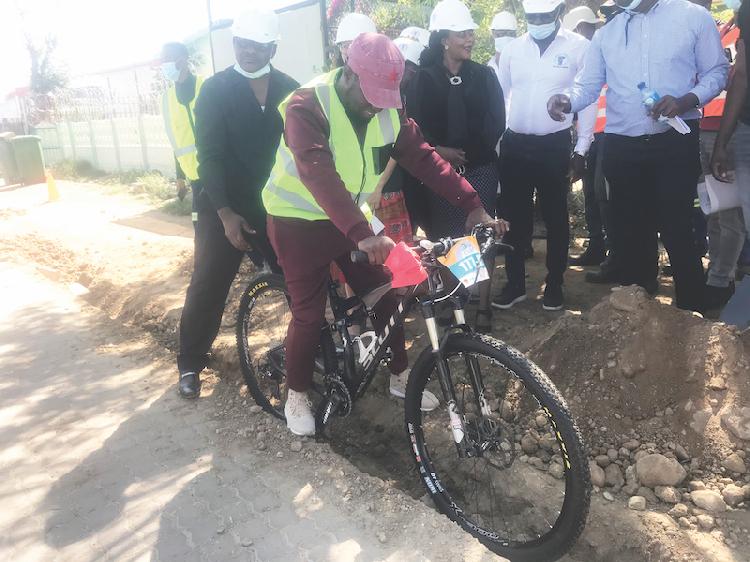Africa-Press – Namibia. WINDHOEK mayor Job Amupanda said Windhoek’s low-income earners spend 24% of their disposable income on mobility, and 52% of them cannot afford public transport.
He was speaking at the launch of the EBikes4Windhoek cycling lanes, a project that aims to demonstrate the use of locally designed and assembled solar–powered electric bicycles as a sustainable and affordable form of transport, yesterday.
The City of Windhoek, the Ministry of Works and Transport and GIZ embarked on the process of developing a sustainable urban transport master plan for Windhoek as part of the Move Windhoek project.
Amupanda said the project’s objectives include creating access to sustainable transport, increasing safety of non-motorised transport, lowering transportation costs by providing more affordable mobility alternatives, demonstrating e-mobility as an energy-efficient service and promoting a cycling culture in Windhoek.
“The project will kick off with 40 e-bikes that will be given to Namibia University of Science and Technology and the University of Namibia Khomasdal Campus students,” he said.
The project further aims to provide cycling infrastructure which complements and improves access and travel choices. It will provide a safe, direct, and comfortable route for students in the pilot project to reach their destinations via a safe cycling route.
The plan identifies the types of investment in infrastructure and services required to improve the public transport system and non-motorised transport provisions in Windhoek and at Rehoboth, Okahandja and Hosea Kutako International Airport.
Since its adaptation in July 2014, the plan enables decision-makers to develop an affordable, accessible, attractive, and efficient public transport and active mobility network, Amupanda said.
Following the launch of the plan, the city developed an active mobility strategy, which was approved by council in May 2019 with the assistance of GIZ. Investing in this strategy is the city’s way of making economic opportunities more accessible to middle and low-income residents, and reducing noticeable peak hour congestion, accidents, pollution, and greenhouse gas emissions.
Dedicated cycling lanes will follow routes between residential areas and chosen campuses. They will be 900 mm to 1 200 mm in width on both sides of the road. The total length of the cycling route is four kilometers, Amupada said.
Ursula Hein-Rooinasie from GIZ said this initiative commemorates a huge milestone in the transportation sector of Namibia. “Non-motorised transport under the umbrella of sustainable mobility has been a topic too long on the lips and it is finally on the ground,” she said. The German government, through GIZ, has been supporting the Namibian government on the improvement of sustainable mobility since 2012.






